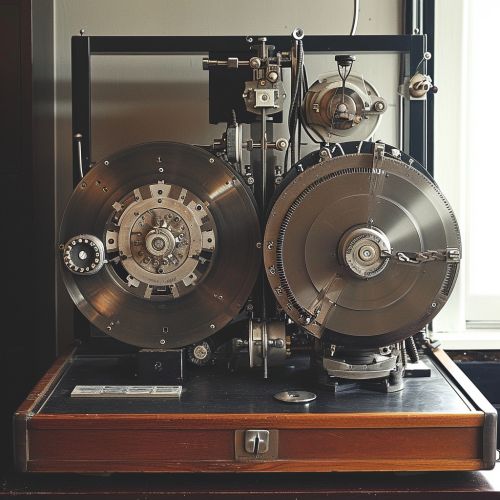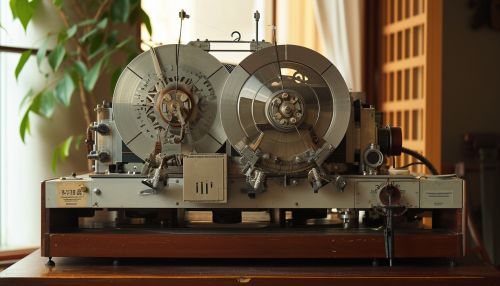Differential analyzer
Overview
The differential analyzer is a mechanical analog computer designed to solve differential equations by integration, using wheel-and-disc mechanisms to perform the integration. It was one of the most advanced computing devices in use before the advent of digital computers.


History
The concept of the differential analyzer dates back to the 19th century, with the work of James Clerk Maxwell and Lord Kelvin. However, the first practical differential analyzer was built by Harold Locke Hazen and Vannevar Bush at the MIT in the early 1930s.
Design and Operation
A differential analyzer consists of a number of interconnected integrating mechanisms, each of which can solve a first-order differential equation. The output of one mechanism can be used as the input to another, allowing the solution of higher-order differential equations. The analyzer's operation is based on the principle of the mechanical integrator, a device that can compute the integral of a function over time.
Applications
Differential analyzers were used extensively in scientific research and industrial applications throughout the mid-20th century. They were used in fields such as physics, engineering, and economics to solve complex differential equations that could not be easily solved by other means.
Legacy
The differential analyzer was a significant step forward in the development of computing technology. It paved the way for the development of digital computers, and many of the principles used in its design are still used in modern computing systems.
